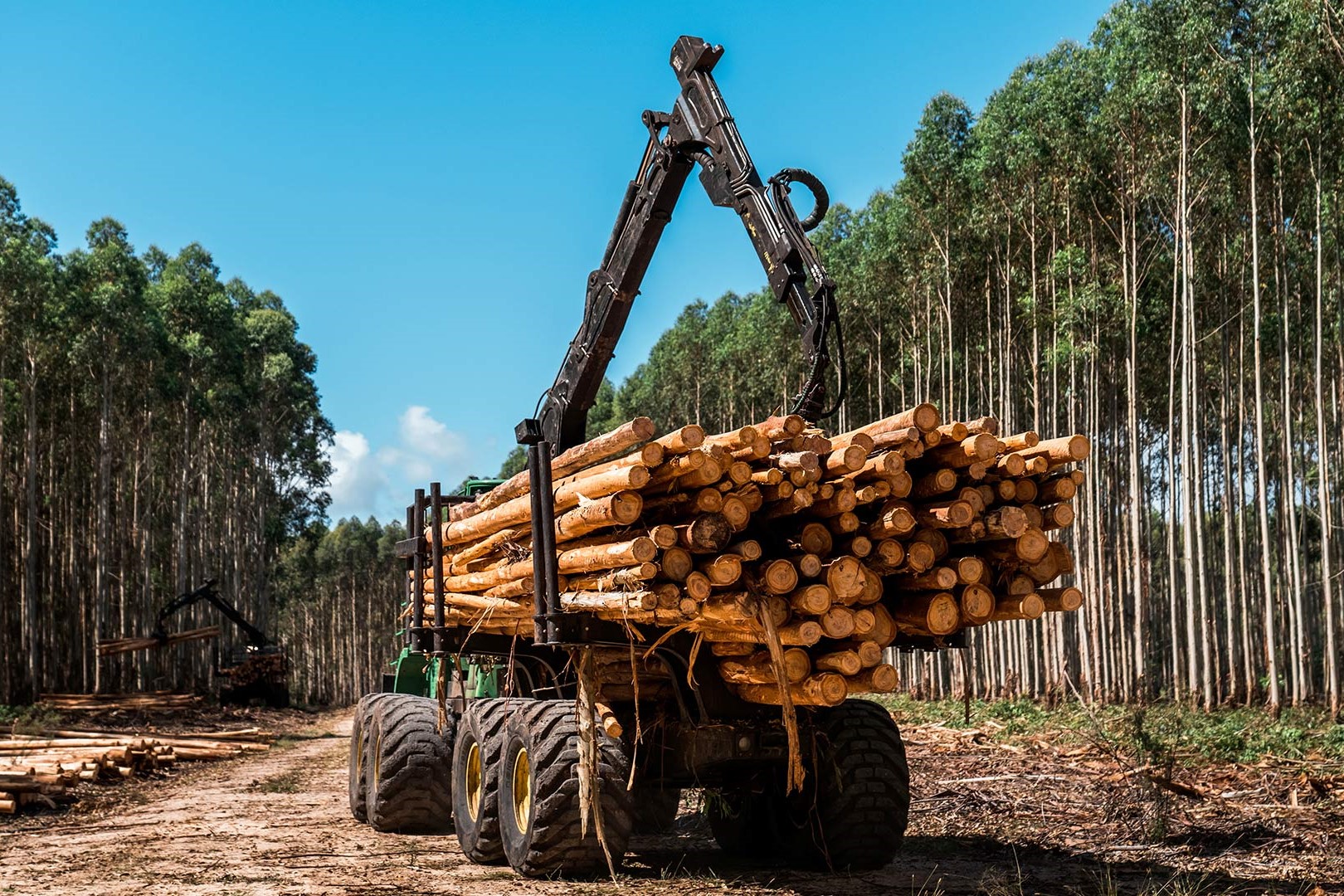 Investing in the future
Investing in the future
UPM’s new pulp mill in Paso de los Toros will raise the company among the world’s leading eucalyptus market pulp producers. Prior to the start-up of pulp production in the first quarter of 2023, each of the mill’s process areas has undergone a thorough testing phase.Located amid the rolling hills of Centenario, on the southern banks of the Río Negro in central Uruguay, is the site of UPM’s second pulp mill in the country. When the first woodchips are fed into its digester, it’ll bring to fruition a project that has been in the works since 2016 and set in motion the production of 2.1 million tonnes of bleached eucalyptus kraft pulp a year.
“It will be one of the largest, most competitive and most sustainable pulp mills in the world,” begins Bernd Eikens, Executive Vice President of UPM Fibres. He believes there is plenty of potential for pulp – and its by-products – as the global community works to reduce its dependence on fossil fuels and plastics.
Meeting this rising demand sustainably is one of the pulp and paper industry's most significant challenges, but Eikens believes the new mill is up to the task. “Pulp is at the core of the bioeconomy and the purpose for the company as a whole is to replace fossil fuel-based products with bioproducts.”
This purpose includes manufacturing pulp-based packaging materials to replace plastic and developing uses for pulp by-products such as lignin and tall oil. “We have a dedicated R&D team focusing on the potential of biomass,” notes Eikens. “Beyond the classical products of timber, paper and pulp, there is more going on to figure out what type of carbon products can be utilised in which way.”
Driving UPM’s long-term sustainable outlook
Part of what drives the forward-looking perspective of UPM is the considerable time and planning it takes to successfully develop and run a pulp mill. “It's a huge logistical operation,” emphasises Marcos Battegazzore, Vice President of UPM Uruguay Pulp and Forestry Operations.
UPM’s second pulp mill in Uruguay will consume about 7.5 million cubic metres of eucalyptus. Considering that it takes these seedlings 10 years to reach maturity, any planned expansion must begin well in advance.
“This type of investment requires a very long planning period and starts from the plantation-based development,” explains Battegazzore. “You need to have a secure wood supply before investing in a mill.”
To develop sustainably, Eikens states that this supply must be grown with support from the local population and not at the expense of food-based agricultural activities. “To be sustainable, you must have good manufacturing logistics, efficiency and a good philosophy at each stage of the production process. This ensures having a clear conscience when producing fibres in Uruguay.”
Preparing for day one of operation
After securing the future wood supply, construction on the new pulp mill began in 2019. When we spoke to Battegazzore, the project team were in the middle of the commissioning process, which is the final step before mill operations begin and all the process parts are tested and connected.
“The mill contains many different departments and process areas that are interconnected but have a specific function within the whole mill,” he adds. The first step is to test the water pumps, which transport this essential component around the mill’s treatment plant, where it can be demineralised and treated for various uses from drinking to firefighting.
“Once we have demineralised water, we can trial the boilers,” continues Battegazzore. The commissioning team will test the small boilers before moving on to ensure the larger units function properly. After they have steam, they can begin trialling some of the other departments.
“This is how it builds up to the point of the start-up. Once we arrive at this point, a large part of the mill has been in operation and has been basically test run,” he says. Along with testing the equipment, the commissioning process enables all the engineers, technicians and support staff required to keep a mill functioning the chance to train and learn all the procedures.
By the time the UPM Paso de los Toros pulp mill officially begins production in the first quarter of 2023, the mill will essentially have been thoroughly tested in each of the process areas guaranteeing excellent performance in terms of safety, environment and production. This ensures a seamless transition and means it could be operating at full capacity already in its first year.
UPM Paso de los Toros in position for future pulp demand
For Battegazzore, who also participated in commissioning UPM’s first Uruguayan pulp mill in the southwestern coastal city of Fray Bentos, the new UPM Paso de los Toros mill will go a long way to help the company meet future demand. “Global trends are very supportive of rising pulp demand in general – urbanisation, population growth and the trend of utilising more natural fibres instead of synthetic fibres,” he observes.
Once the mill is fully operational, Uruguay will be the world’s fifth-largest exporter of pulp. However, UPM’s investment has also been designed to resist all types of market shocks. As a result, Battegazzore is confident that it will remain competitive in the long term, regardless of demand.
“Production will be competitive through any price cycle, which is normally seen in the pulp industry, as in other commodities, and that is one of the main considerations when making a 50-year investment,” he concludes.
